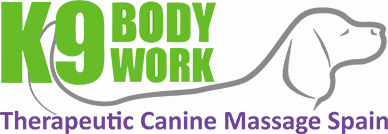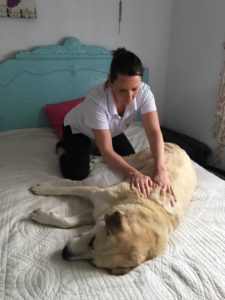FAQ
Why do I need veterinary consent for my dog to be massaged?
Under the Veterinary Act 1966 and the Veterinary Surgery Exemption Order 1962, it is illegal for any non-veterinary therapist to treat an animal without veterinary consent. As this Act was introduced in the UK to protect your pet K9 Body Work feels these standards should not be compromised and will therefore not work on a dog that hasn’t been cleared by a vet as medically fit to undergo a therapeutic canine massage.
Can I stay with my dog during the massage?
Yes, many dogs find it easier to settle with their owner in the room, however if this is not the case occasionally the owner will be requested to leave the room.
How many sessions will my dog need?
Therapeutic canine is a results driven therapy and aims to resolve or improve muscular injuries in 1-3 sessions. Orthopaedic conditions such as hip dysplasia or osteoarthritis may take longer before significant improvement is seen and after the initial course of treatments may also benefit form regular maintenance massage.
Will massage hurt my dog?
As anyone who’s had a deep tissue/sports massage will know, it can cause slight discomfort. The aim is to make the experience as pleasurable for your dog as possible so muscles will always be warmed up and any deep muscle work will be followed by softer massage to help your dog stay relaxed.
Are there any side effects?
Massage releases toxins into the body so for 24-48 hours after a massage your dog may be lethargic, restless, thirsty. They may lose their appetite or in some instances vomit. This is perfectly normal, it’s called the ‘healing crisis’ and it’s just the body trying to eliminate the toxins that have been released. Make sure your dog has plenty of fresh water to drink, reduce their exercise slightly and encourage plenty of rest.

